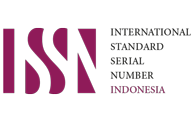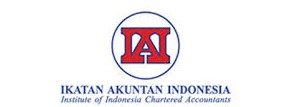Exploring The Facts of Teaching Technologies for Accounting Students in The Digital Era
Abstract
Accounting education has been significantly impacted by the digital age, especially regarding the ability to use electronic technology in the accounting industry. However, we face the pressing need to close the gap between accounting education and technical advancements in accounting reporting. Multimedia interactive learning resources Yes, a lot has been created, but frequently without considering the curriculum and user needs. This study offers a viewpoint on technology acceptability in the curriculum provided to aspiring accountants using the Technology acceptability Model (TAM) approach. This study employs a quantitative approach, gathering information using primary sources, specifically a survey. research uses a quantitative method by collecting data through primary data, namely a questionnaire. There are a total of 44 questions consisting of 13 questions to explain the exploration of students' knowledge and skills, and 31 questions to explain the prediction of individuals' ability to adapt and use new technologies. According to the study's findings, students' opinions about how beneficial and simple technology is to use are heavily impacted by outside variables including prior educational experiences. A favorable attitude toward students' intention to use technology in their learning activities will encourage them. But there are still some issues that need to be resolved, like students' inability to use specific software and their lack of interest in learning new technology. The study's findings suggest that outside variables, such as past educational experiences, significantly impact how students view the usefulness and usability of technology.
References
Ajzen, I., & Fishbein, M. (2000). Attitudes and the Attitude-Behavior Relation: Reasoned and Automatic Processes. European Review of Social Psychology, 11(1), 1–33. https://doi.org/10.1080/14792779943000116
Al-Hattami, H. M. (2023). Understanding perceptions of academics toward technology acceptance in accounting education. Heliyon, 9(1), e13141. https://doi.org/10.1016/j.heliyon.2023.e13141
Almeida, A. C., & Carvalho, C. (2022). The adequacy of academic curricula for digital transformation in the accounting education . 17th Iberian Conference on Information Systems and Technologies (CISTI), 1–7.
Asonitou, S. (2020). Technologies to Communicate Accounting Information in the Digital Era: Is Accounting Education Following the Evolutions? In Strategic Innovative Marketing and Tourism (pp. 187–194). Springer International Publishing. https://doi.org/10.1007/978-3-030-36126-6_21
Awang, Y., Taib, A., Shuhidan, S. M., Rashid, N., & Hasan, M. S. (2023). Fulfilling the Demands of Digitalization in the Accounting Profession: A Technological Knowledge Assessment for Future Accountants. Indonesian Journal of Sustainability Accounting and Management, 7(S1). https://doi.org/10.28992/ijsam.v7S1.879
Azih, N. (2018). Electronic Accounting: An Imperative Tool For Quality Assurance In Accounting Education Programme In The Digital Era.
Chin, W. W. (1998). The Partial Least Squares Aproach to Structural Equation Modeling. In Modern Methods For Business Research (pp. 295–336).
Davis, F. D. (1989). Perceived Usefulness, Perceived Ease of Use, and User Acceptance of Information Technology. MIS Quarterly, 13(3), 319. https://doi.org/10.2307/249008
Dharel, P. A., M, C., J. K. V, C., J. R, M., & Sombilon, V. (2020). Relationship of Students’ Internet Usage and Academic Performance. Education, Computer Science.
Ellis, L. (2022). Why So Many Accountants Are Quitting. . The Wall Street Journal.
Firomumwe, T., & Gamira, D. (2021). Evaluating Technology Acceptance in Teaching of Advanced Level Geography in Zimbabwean Secondary Schools. Pakistan Journal of Distance & Online Learning, VII(1), 1–14.
Ghani, E. K., Ilias, A., Muhammad, K., Rosley, N. A., Ali, M. M., & Sukmadilaga, C. (2023). Expectation Gap on Accounting Graduates’ Skill Attributes between Accounting Educators and Employers in Industry 4.0 Environment: A Malaysian Evidence. Educational Administration: Theory and Practice, 30(2). https://doi.org/10.52152/kuey.v30i3.1059
Hair, J., & Alamer, A. (2022). Partial Least Squares Structural Equation Modeling (PLS-SEM) in second language and education research: Guidelines using an applied example. Research Methods in Applied Linguistics, 1(3), 100027. https://doi.org/10.1016/j.rmal.2022.100027
Hair, J. F., Hult, G. T. M., Ringle, C. M., &, & Sarstedt, M. (2022). A Primer on Partial Least Squares Structural Equation Modeling (PLS-SEM) (3rd ed.). Sage.
Kathy, G. (2023). Tackling the CPA Shortage in Today’s Job Market. SHRM.
Keong, Y. C., Albadry, O., & Raad, W. (2014). Behavioral Intention of EFL Teachers to Apply E-Learning. Journal of Applied Sciences, 14(20), 2561–2569. https://doi.org/10.3923/jas.2014.2561.2569
Lestari, S., & Santoso, A. (2019). The Roles of Digital Literacy, Technology Literacy, and Human Literacy to Encourage Work Readiness of Accounting Education Students in the Fourth Industrial Revolution Era. KnE Social Sciences, 3(11), 513. https://doi.org/10.18502/kss.v3i11.4031
Mailizar, M., Almanthari, A., & Maulina, S. (2021). Examining Teachers’ Behavioral Intention to Use E-learning in Teaching of Mathematics: An Extended TAM Model. Contemporary Educational Technology, 13(2), ep298. https://doi.org/10.30935/cedtech/9709
Ogedebe, P. (2012). Internet Usage and Students’ Academic Performance in Nigeria Tertiary Institutions: A Case Study of University of Maiduguri.
Pan, G., & Seow, P.-S. (2016). Preparing accounting graduates for digital revolution: A critical review of information technology competencies and skills development. Journal of Education for Business, 91(3), 166–175. https://doi.org/10.1080/08832323.2016.1145622
Pasewark, W. R. (2021). Preparing Accountants of the Future: Five Ways Business Schools Struggle to Meet the Needs of the Profession. Issues in Accounting Education, 36(4), 119–151. https://doi.org/10.2308/ISSUES-19-025
Sánchez-Mena, A., Martí-Parreño, J., & Aldás-Manzano, J. (2019). Teachers’ intention to use educational video games: The moderating role of gender and age. Innovations in Education and Teaching International, 56(3), 318–329. https://doi.org/10.1080/14703297.2018.1433547
Sawan, N., Al-Hajaya, K., Alshhadat, M., & Salem, R. I. A. (2024). Accountancy students’ perceptions of the quality of teaching and learning experiences in two UK business schools: implications for generic skills development. Journal of International Education in Business, 17(2), 246–264. https://doi.org/10.1108/JIEB-08-2023-0057
Syafrizal, A., Ernawati, E., & Dwiandiyanta, Y. (2016). Penerapan Model Technology Acceptance Model (TAM) untuk Pemahaman Media Pembelajaran Berbasis Multimedia Interaktif. Scientific Journal of Informatics, 2(1), 9–14. https://doi.org/10.15294/sji.v2i1.4524
Taib, A., Awang, Y., Shuhidan, S. M., Rashid, N., & Hasan, M. S. (2022). Digitalization in Accounting: Technology Knowledge and Readiness of Future Accountants. Universal Journal of Accounting and Finance, 10(1), 348–357. https://doi.org/10.13189/ujaf.2022.100135
Tasniem Fauzia, Afni, Z., & Elfitri Santi. (2021). Konten Kurikulum Akuntansi Perguruan Tinggi Dan Kesesuaiannya Dengan Standar Kompetensi Lulusan. Akuntansi Dan Manajemen, 16(2), 168–190. https://doi.org/10.30630/jam.v16i2.146
Vallerand, R. J., Deshaies, P., Cuerrier, J.-P., Pelletier, L. G., & Mongeau, C. (1992). Ajzen and Fishbein’s theory of reasoned action as applied to moral behavior: A confirmatory analysis. Journal of Personality and Social Psychology, 62(1), 98–109. https://doi.org/10.1037/0022-3514.62.1.98







.png)
.png)
